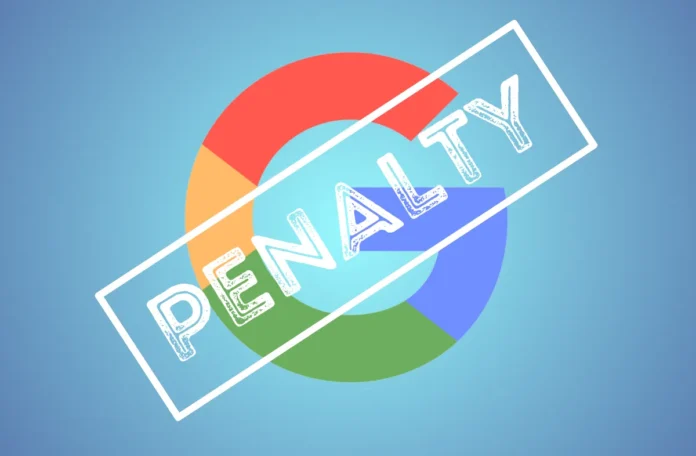In today’s digital era, where a company’s success and failure depend on online presence, it is important to learn the inner workings of search engines. One of the biggest problems companies encounter is a Google penalty. Google penalties have devastating effects on your website traffic and reputation. This article explores what Google penalties are, their categories, causes, and how to get over them.
What is a Google Penalty?
A Google penalty refers to a sanction Google levies against websites for contravening its webmaster policies. A penalty may either be manual or algorithmic. A manual penalty is when Google’s team sends the penalty once it detects infringements, while an algorithmic penalty comes by means of modifications in Google’s algorithms, whereby Google automatically grades and ranks sites on how compliant they are with policies.
Types of Google Penalties
1. Manual Penalties:
– Manual penalties are due to human assessment of your site. Google’s webspam team usually detects links or content that are spammy, misleading, or breaking their guidelines.
– Typical causes of manual penalties are unnatural link building, thin content or copied content, and cloaking wherein users are presented with content that is different from what is displayed to search engines.
2. Algorithmic Penalties:
– Algorithmic penalties arise when a website is hit by Google’s constant algorithm updates, e.g., Panda, Penguin, or Hummingbird.
– The updates aim to improve user experience and search result quality by rewarding good content and penalizing websites using manipulative methods.
Common Causes of Google Penalties
– Manipulative Link Building: The use of shady methods to acquire links, e.g., buying links or joining link farms, may bring about penalties.
– Poor Quality Content: Thin content, copied content, or useless content may be marked. Google values quality content that is informative and satisfies the question asked by the users.
– Keyword Stuffing: Using many keywords with an effort to deceive search ranking may bring about penalties.
– Cloaking: Presenting different content to search engines and users tricks both of them, and thus penalties are imposed.
– Spammy User-Generated Content: If your site has user contributions allowed, spam posts may result in penalties if they are not moderated.
Detecting a Google Penalty
Determining whether your site has been penalized is the first step towards recovery. Some indications are:
– Sudden Drop in Traffic: Keep an eye on your traffic over time in Google Analytics. A sudden drop, especially following a Google update, could be a sign of a penalty.
– Manual Action Notifications: You will get a notification in your Google Search Console if a manual penalty has been issued. This notification will mention the type of violation.
– Unexplained Ranking Drops: When your website falls in rankings for some keywords overnight mysteriously without modifying content or structure, it might be an algorithm update affecting your website’s assessment.
Steps to Recover from a Google Penalty
To recover from a Google penalty takes time and can be a complicated process. Here’s a systematic approach:
1. Identify the Cause:
– When you get a manual penalty notice, check the specific problems pointed out. In the case of algorithmic penalties, review your content and backlink analyses for any inconsistency.
2. Audit Your Website:
– Perform a thorough audit of your website. Look for poor content, dead links, and make sure your website follows Google’s Webmaster Guidelines.
3. Remove or Disavow Bad Links:
– If your penalty is due to unnatural links, begin to contact the webmasters of the sites linking back to you and ask that you be removed. For links you can’t remove, submit them to Google’s Disavow Tool to cancel their influence.
4. Content Quality Enhancement:
– Update or delete content that is classified as low quality or duplicate. Spending in high-quality content that is engaging and valuable is the point through which Google can be favorably regained.
5. Request a Reconsideration:
– After you feel you have addressed the problems, you can request reconsideration using Google Search Console. Offer complete details on what steps you have taken to adhere to Google’s guidelines.
6. Track and Adapt:
– After recovery, track your website’s metrics carefully. This enables you to adapt in a timely manner in case of any fresh penalties.
Prevention Tactics
Learning from a penalty is important, but prevention is more important. Some preventive strategies are as follows:
– Obey Best Practices: Be diligent in observing Google’s Webmaster Guidelines. This minimizes the chances of penalties.
– Produce High-Quality Content: Ensure to create fresh, informative, and interesting content that addresses the needs of the user.
– Thorough Link Building: Practice ethical and transparent link-building strategies. Shun links from questionable or off-topic sites.
– Stay Informed: Keep abreast of updates and changes in the search algorithm to understand potential impacts on your site.
Conclusion
Google penalties can have dire effects on your website’s traffic and authority. Understanding the nature of these penalties, the reasons they occur, and how to recover from them is essential for any business seeking longevity in the digital marketplace. By placing SEO best practices at the top of their agenda and producing high-quality content, companies can protect themselves from penalties and enjoy long-term online visibility. The road to recovery is long, but by being focused and taking the right steps, reclaiming your position in Google’s favor is very much achievable.
